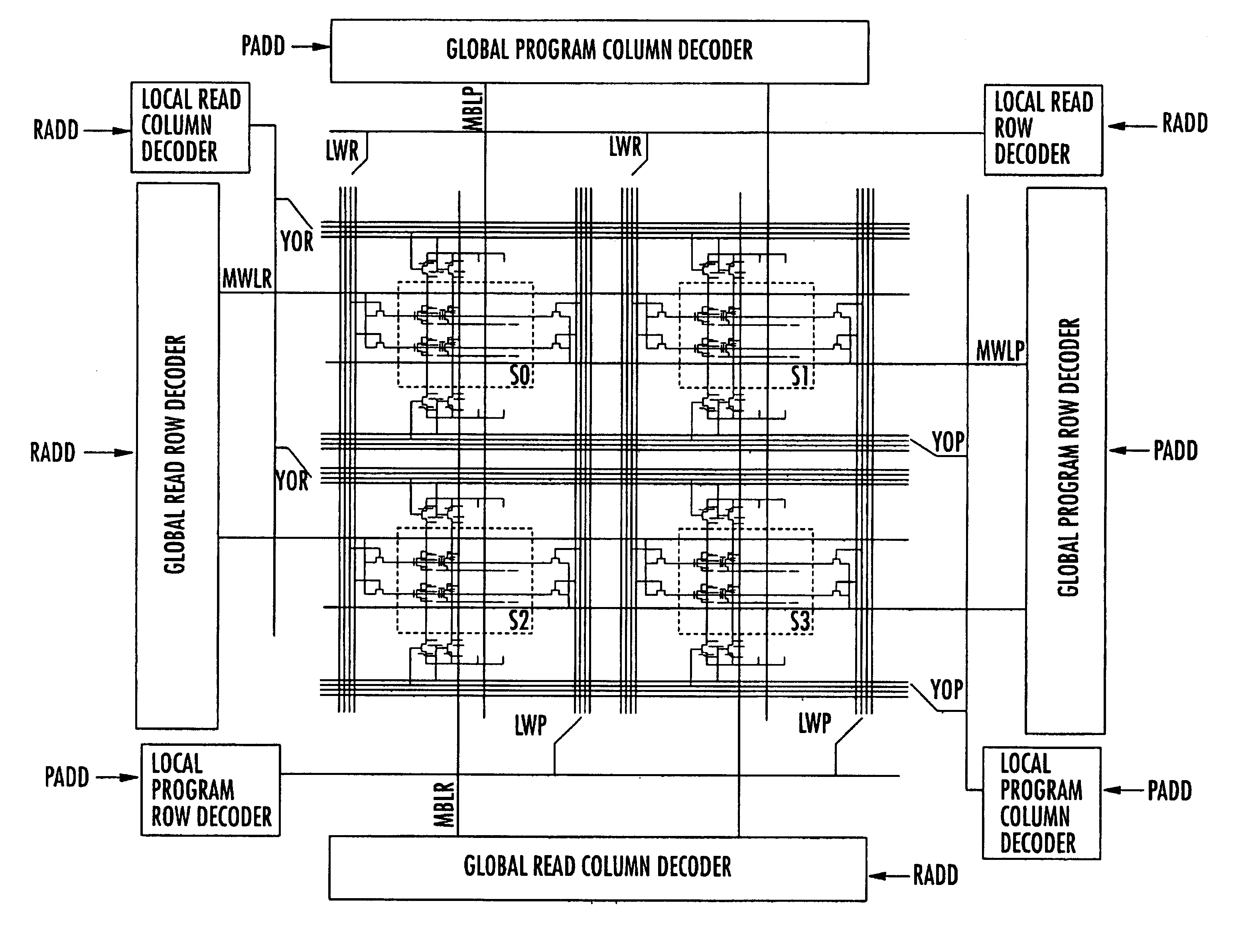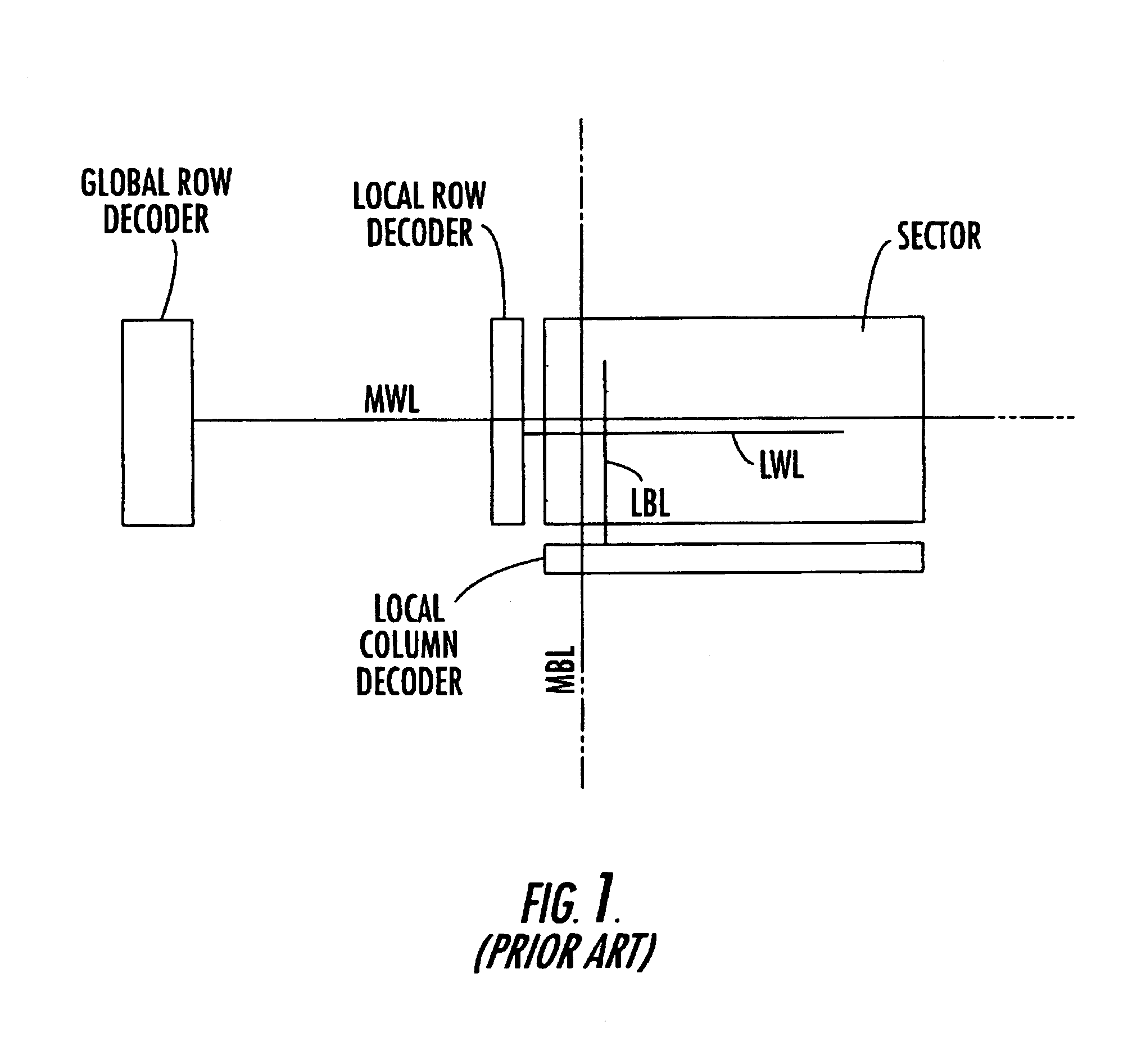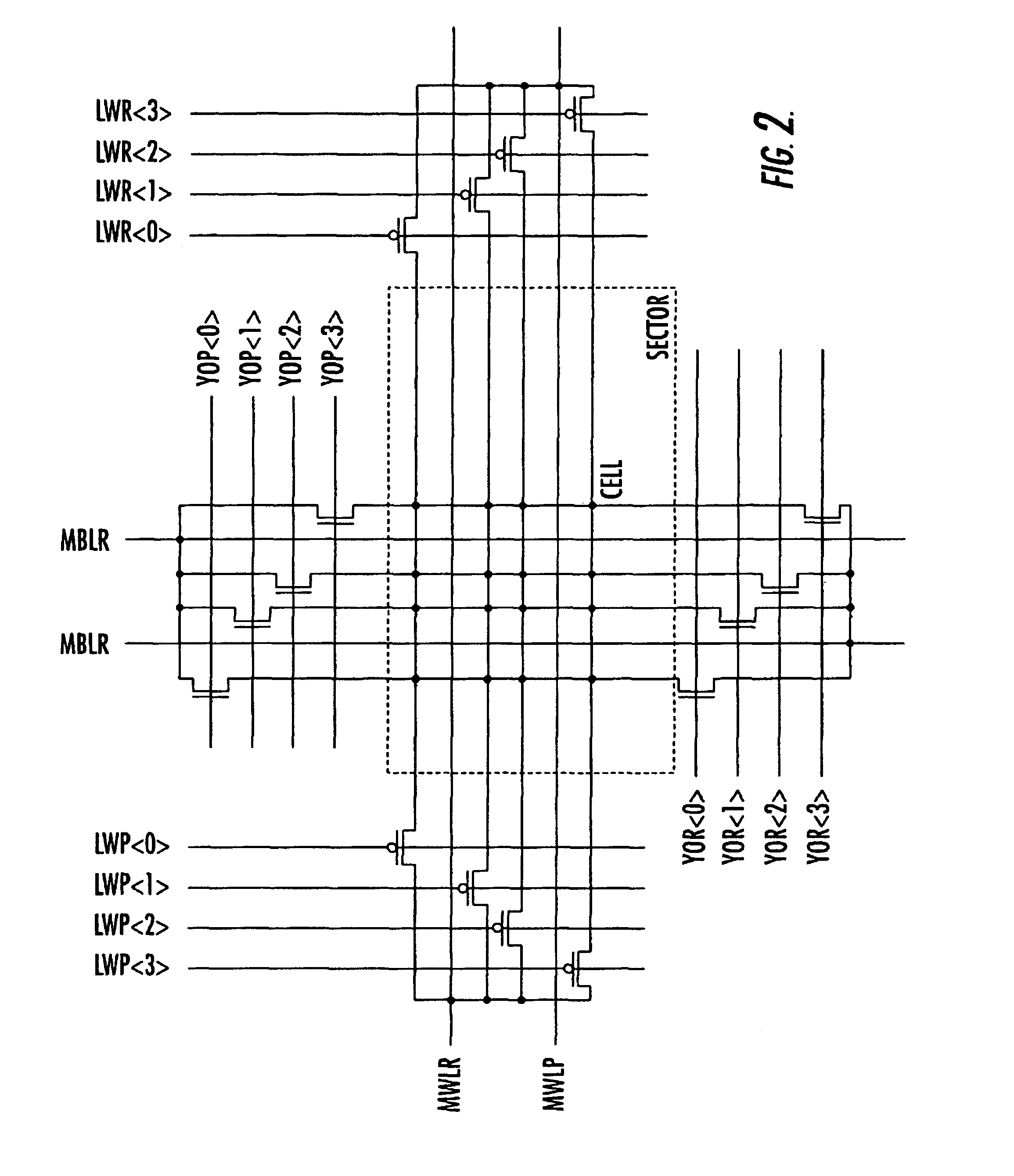Architecture for a flash-EEPROM simultaneously readable in other sectors while erasing and/or programming one or more sectors
a technology of flash memory and architecture, which is applied in the direction of static storage, digital storage, instruments, etc., can solve the problems of limited non-volatile flash memory performance, limited memory performance, and difficulty in reading data, so as to reduce the required area, reduce the silicon integration area, and reduce the effect of program tim
- Summary
- Abstract
- Description
- Claims
- Application Information
AI Technical Summary
Benefits of technology
Problems solved by technology
Method used
Image
Examples
Embodiment Construction
[0018]FIG. 2 highlights the fundamental aspect of the memory architecture of the present invention. The diagram, limited to a single sector SECTOR of the numerous sectors in which the array of memory cells CELL may be customarily divided, reveals the existence of two distinct types of main wordlines and main bitlines.
[0019]The main wordlines belong to two distinct groups or orders. One is the group of the main read wordlines, labeled MWLR, and the other is the group of the main program wordlines, labeled MWLP. Each pair of MWLR and MWLP lines is associated to the same subgroup of local wordlines, which in the example shown are four in each sector in which the memory cell array is divided.
[0020]Similar to the wordlines, there are also two distinct groups or orders of main bitlines. The main read bitlines, labeled MBLR, represent a first order or group, and the main program bitlines, labeled MBLP, represent the second order or group. The local bitlines and wordlines of each sector are...
PUM
 Login to View More
Login to View More Abstract
Description
Claims
Application Information
 Login to View More
Login to View More - R&D
- Intellectual Property
- Life Sciences
- Materials
- Tech Scout
- Unparalleled Data Quality
- Higher Quality Content
- 60% Fewer Hallucinations
Browse by: Latest US Patents, China's latest patents, Technical Efficacy Thesaurus, Application Domain, Technology Topic, Popular Technical Reports.
© 2025 PatSnap. All rights reserved.Legal|Privacy policy|Modern Slavery Act Transparency Statement|Sitemap|About US| Contact US: help@patsnap.com



